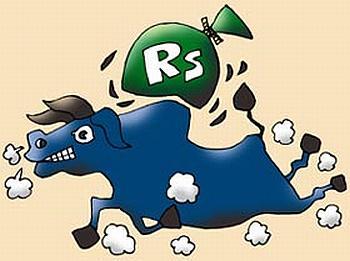Photographs: Rediff Archives Morningstar.in
Two ratios can help you in monitoring your mutual funds' performances and finding worthy ones.
Many financial information websites such as Morningstar display upside and downside capture ratios while showing data for mutual funds. These ratios offer a relatively straightforward way to evaluate a fund's historical performance during both rallies and down markets.
When used in conjunction with other risk measures, upside/downside capture ratios can be a handy tool for monitoring your holdings' performance and conducting due diligence on possible additions to your portfolio.
How are the ratios calculated?
The statistics show you whether a given fund has outperformed -- gained more or lost less than -- a broad market benchmark during periods of market strength and weakness, and if so, by how much.
Upside capture ratios for funds are calculated by taking the fund's monthly return during months when the benchmark had a positive return and dividing it by the benchmark return during that same month.
Downside capture ratios are calculated by taking the fund's monthly return during the periods of negative benchmark performance and dividing it by the benchmark return.
How to find mutual funds that will make money for YOU
Photographs: Rediff Archives
Morningstar displays the upside and downside capture ratios over one-, three-, five-, 10-, and 15-year periods by calculating the geometric average for both the fund and index returns during the up and down months, respectively, over each time period.
An upside capture ratio over 100 indicates a fund has generally outperformed the benchmark during periods of positive returns for the benchmark.
Meanwhile, a downside capture ratio of less than 100 indicates that a fund has lost less than its benchmark in periods when the benchmark has been in the red.
All stock funds' upside and downside capture ratios are calculated versus the category's MPT benchmark. For context, we also show the category average upside/downside capture ratios for those same time periods.
How to find mutual funds that will make money for YOU
Photographs: Rediff Archives
What do the numbers mean?
If both the upside and downside capture ratios for a fund are 100, that means the fund moved in lockstep with the benchmark during both up and down markets.
For example, in the case of L&T Growth Fund, its five-year upside/downside capture ratios are just a hair away from 100, meaning in up markets, the fund clocks about all of the benchmark's gains and on the way down, tracks about all of the benchmark's losses.
But for most actively managed funds, upside and downside capture ratios will illustrate a more significant divergence from the benchmark.
ICICI Prudential Focused Bluechip Equity has a three-year upside capture ratio of 103.83 per cent and a downside capture ratio of 76.94 per cent, which indicates that it outperformed the BSE 100 by 3.83 per cent in up markets and "captured" only 76.94 per cent of the benchmark's negative performance during market declines.
Such a strong record of upside potential coupled with downside protection means the fund may be a worthwhile candidate for further investigation.
How to find mutual funds that will make money for YOU
Photographs: Rediff Archives
Keep in mind the caveats
While ICICI Prudential Focused Bluechip Equity Retail or other similar funds demonstrate a "best of both worlds" performance pattern, most funds will have a bigger trade-off between their upside and downside performance. If a fund has a sizable up-market performance versus its index, it is likely to have sub-par downside performance, and vice versa.
Moreover, it's worth bearing in mind that all funds within a given asset class are compared to a single market benchmark. As noted earlier, we use the BSE 100 for large-cap equity funds, the IISL CNX Mid Cap Index for mid and small-cap funds and the BSE 200 for ELSS funds.
If the manager uses an investment style that's dramatically different than the benchmark, you can expect that its upside/downside capture ratios will be striking.
Also, do not focus too much on a single data such as either the upside-capture ratio or the downside-capture ratio, especially over a specific market cycle. For instance, between 2007 and 2012, when the broader market hardly clocked any gains point to point and the period was marked with bouts of extreme volatility, funds that were overweight on defensive stocks would likely sport a better downside-capture ratio compared to their risky counterparts but may lag when the market cycle turns around into a bull run.






Comment
article